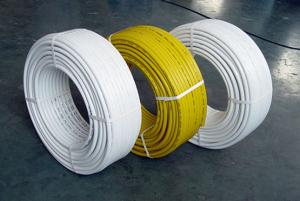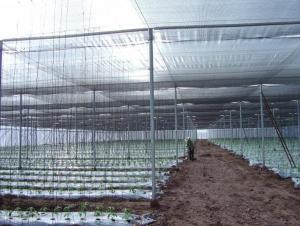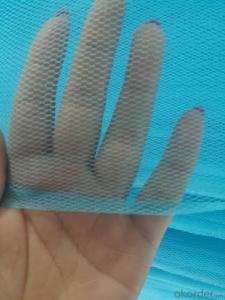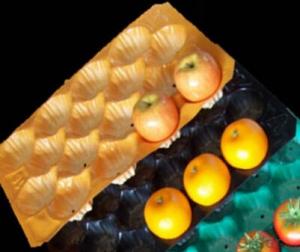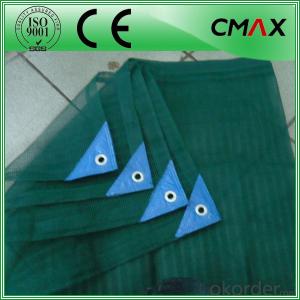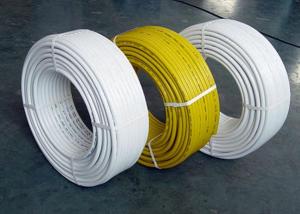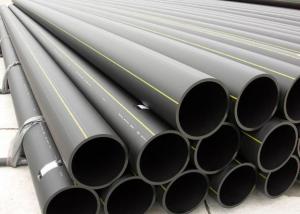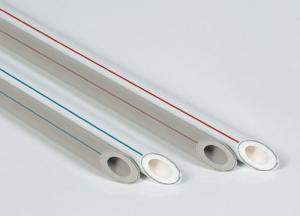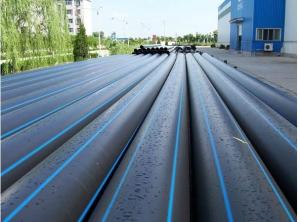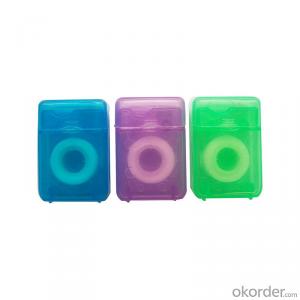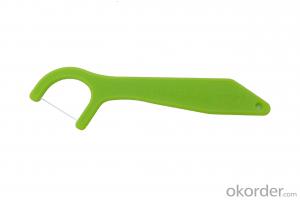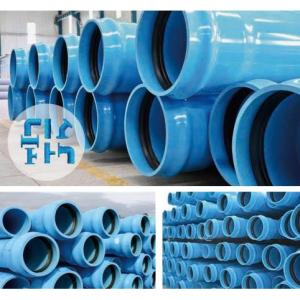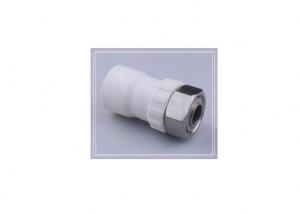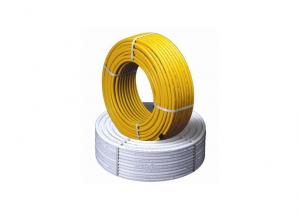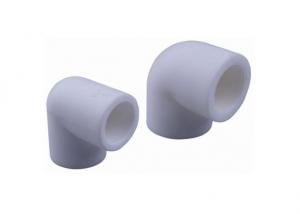PEX/AL/PEX Composite Pipe
- Loading Port:
- China Main Port
- Payment Terms:
- TT or LC
- Min Order Qty:
- 5000 Meters m
- Supply Capability:
- 100000000 Meters m/month
OKorder Service Pledge
OKorder Financial Service
You Might Also Like
Basic Size of PEX/AL/PEX Composite Pipe:
Name | Size (mm/inch) | Package | AL Thickness | Measure |
ft/coils | mm | CBM | ||
PEX-AL-PEX pipe | 1/2“ /1216mm | 1000 | 0.21mm | 89*19*89 |
3/4"/2025mm | 1000 | 0.25mm | ||
1"/2532mm | 500 | 0.30mm | ||
1-1/4"/3240mm | 300 | 0.4mm |
Features of PEX/AL/PEX Composite Pipe:
1,Material: Random Polypropylene
2, Sizes: 16mm to 32mm
3, Pressure Rating: 1.25MPa, 1.6MPa, 2.0MPa ,2.5MPa
4, Colors: every color is available, depend on customers
5, Connection: socket fusion joint, electro fusion joint or transition joint
6, Standard: ISO
Applications of PEX/AL/PEX Composite Pipe:
1, Cold or hot water supply
2, heating system including flooring heating
3, wall heating and radiating system
4, Central air conditioning system
5, industrial liquids transportation

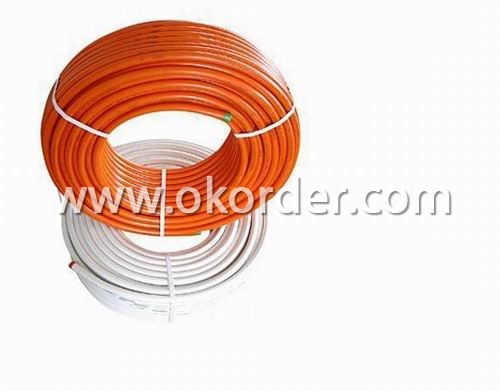
- Q:How to install the steel plastic composite pipe correctly?
- Reliable measures for corrosion protection of buried steel plastic composite pipes. In the pool (box) is not part of the water pipe should be used inside and outside coated steel pipe and pipe fittings. Lance drain pipe, outlet pipe should be used inside and outside the pipe end and coated pipe. 7, the composite pipe welding connection to take a blue installation method and two installation method for the installation of a method according to the construction personnel's technical proficiency: site is drawing pipe into the single processing map, send professional processing mill pipe, fittings coating (lining) prefabrication, and then to the site for installation.
- Q:Can composite pipes withstand high impact forces?
- Yes, composite pipes are designed to withstand high impact forces due to their strong and durable nature. They are made from a combination of materials such as fiberglass, carbon fiber, and resin, which provide excellent impact resistance. Additionally, composite pipes exhibit high strength-to-weight ratio, making them capable of withstanding external forces without deforming or breaking.
- Q:Are composite pipes lightweight compared to traditional pipes?
- Yes, composite pipes are generally lighter in weight compared to traditional pipes.
- Q:Are composite pipes suitable for use in mining operations?
- Yes, composite pipes are suitable for use in mining operations. Composite pipes have several advantages such as high strength, corrosion resistance, light weight, and flexibility, making them ideal for mining environments where there are harsh conditions, abrasive materials, and corrosive fluids. Additionally, their long lifespan and low maintenance requirements make them a cost-effective choice for mining operations.
- Q:Are composite pipes suitable for hot water applications?
- Yes, composite pipes are suitable for hot water applications. Composite pipes, typically made from a combination of materials such as fiberglass, PEX, or PVC, possess excellent heat resistance and can withstand high temperatures. They are durable, corrosion-resistant, and have low heat loss, making them an ideal choice for hot water systems. Additionally, composite pipes are lightweight and easy to install, making them a cost-effective and efficient solution for hot water applications.
- Q:Are composite pipes resistant to rodent and insect damage?
- Yes, composite pipes are generally resistant to rodent and insect damage. The materials used in composite pipes, such as fiberglass or plastic, do not attract rodents or insects, making them less prone to damage compared to traditional pipes made of metals or wood. Additionally, composite pipes are typically designed to be durable and have a smooth surface, making it difficult for rodents or insects to chew through them. However, it is important to note that no pipe material is entirely immune to rodent or insect damage, and regular inspection and maintenance are still recommended to ensure the longevity of composite pipes.
- Q:Can composite pipes be used for automotive manufacturing?
- Yes, composite pipes can be used for automotive manufacturing. Composite materials such as carbon fiber or fiberglass offer high strength-to-weight ratios, corrosion resistance, and design flexibility, making them suitable for various automotive applications. Composite pipes can be employed in areas like fuel delivery systems, coolant lines, exhaust systems, or air intake systems, contributing to improved efficiency, reduced weight, and enhanced performance of vehicles.
- Q:Are composite pipes resistant to seismic activity?
- Yes, composite pipes are generally resistant to seismic activity. The combination of materials used in composite pipes, such as fiberglass or carbon fiber reinforced polymers, provide them with high strength-to-weight ratios and excellent resistance to impacts and vibrations. This makes them highly durable and less prone to damage during seismic events compared to traditional piping materials like metal or concrete. Additionally, composite pipes offer flexibility, allowing them to better absorb and distribute the energy generated by seismic activity, further enhancing their resistance.
- Q:Can composite pipes be used for fire protection systems?
- Yes, composite pipes can be used for fire protection systems. Composite pipes are often made of materials like fiberglass, which have excellent fire resistance properties. These pipes are durable, lightweight, and resistant to corrosion, making them suitable for fire protection applications. Additionally, composite pipes can be easily installed and have a long lifespan, providing reliable and efficient fire protection.
- Q:Do composite pipes require insulation in cold weather?
- Yes, composite pipes generally require insulation in cold weather to prevent freezing and maintain desired temperatures.
1. Manufacturer Overview |
|
|---|---|
| Location | Wuxi,China |
| Year Established | 1998 |
| Annual Output Value | US$1.5 Million - US$2 Million |
| Main Markets | South America Eastern Europe Southeast Asia Africa Oceania Mid East Eastern Asia |
| Company Certifications | NONE |
2. Manufacturer Certificates |
|
|---|---|
| a) Certification Name | |
| Range | |
| Reference | |
| Validity Period | |
3. Manufacturer Capability |
|
|---|---|
| a)Trade Capacity | |
| Nearest Port | Shanghai |
| Export Percentage | 50% |
| No.of Employees in Trade Department | 6-10 People |
| Language Spoken: | English, Chinese |
| b)Factory Information | |
| Factory Size: | 5,000-10,000 square meters |
| No. of Production Lines | 5 |
| Contract Manufacturing | OEM Service Offered;Design Service Offered;Buyer Label Offered |
| Product Price Range | Average |
Send your message to us
PEX/AL/PEX Composite Pipe
- Loading Port:
- China Main Port
- Payment Terms:
- TT or LC
- Min Order Qty:
- 5000 Meters m
- Supply Capability:
- 100000000 Meters m/month
OKorder Service Pledge
OKorder Financial Service
Similar products
New products
Hot products
Related keywords
